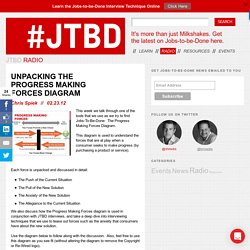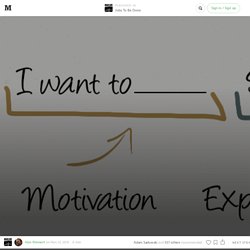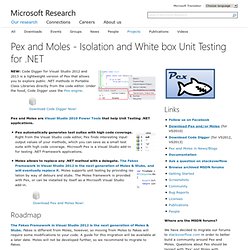

Interaction design. Mastering Jobs-to-be-Done Interviews. I am an Innovator (JTBD Method), a Product Developer (+1000 new products), a Businessman (5 Startups), a Mentor, a Student, and a Citizen.

I believe there are more opportunities and need for change at hand today than there has been in a long time. The opportunity for change is really about personal INNOVATION. It is time for the world to take full advantage of the over-supply of technology and learn to INNOVATE by applying this technology in new and unique ways. I have been blessed with the opportunity to work directly with some great mentors in Clayton Christensen, Dr. Genichi Taguchi, W. Unpacking the Progress Making Forces Diagram. This week we talk through one of the tools that we use as we try to find Jobs-To-Be-Done: The Progress Making Forces Diagram.

This diagram is used to understand the forces that are at play when a consumer seeks to make progress (by purchasing a product or service). Each force is unpacked and discussed in detail: The Push of the Current SituationThe Pull of the New SolutionThe Anxiety of the New SolutionThe Allegiance to the Current Situation We also discuss how the Progress Making Forces diagram is used in conjunction with JTBD interviews, and take a deep dive into interviewing techniques that we use to tease out forces such as the anxiety that consumers have about the new solution.
The forces at work when choosing a product. The jobs-to-be-done framework isn’t new, but I’ve only recently started digging into it much more since it’s been gaining a lot of traction everywhere I look.

For a nice primer on the topic see Eric Portelance’s recent article for Teehan+Lax called The Iceberg of Jobs-to-be-Done, in which he explains how crucial this framework is for good product design: [Most successful products are created by] people who understand the importance of creating products that solve real customer problems, and have a set of tools and frameworks like jobs-to-be-done that they use to identify and validate the real human problems they’re trying to solve in the market. The progress-making forces diagram has been particularly useful for me in client work, since it helps people understand how difficult it can be to change existing user behavior. Architectures Anonymous Lecture Notes and Papers.
5 Tips For Writing A Job Story — Jobs To Be Done. A Job Story is a powerful way to facilitate team conversation and discovery when designing products.

They are meant to cut right to the job to be done by eliminating distractions. The job story encourages the product’s design process to focus on context, causality and motivations instead of assumptions, subjectiveness, personas and implementations. As I write more job stories, I’ve been paying attention to characteristics which make some stories better than others. When a story is well done, it helps me and my team cut right to what needs to be discussed and puts us all on the same page — making the product design process dramatically better.Here are 5 tips which will help when writing Job Stories: Refine A Situation By Adding Contextual InformationJob Stories Come From Real People Not PersonasDesign Modular Job Stories Which Features (Solutions) Can Plug IntoAdd Forces To MotivationsJob Stories Don’t Have To Be From A Specific Point Of View 1. 2. 3. …and after adding detail…. and….. 4. Replacing The User Story With The Job Story — Jobs To Be Done.
I’ve written about the problem with user stories before.

At the time, I found it better to just have the team talk over proposed changes to the product. This worked great when the team had gelled and the product is very mature; however, now I’m working with a new team and building a product from scratch. In this case, because our canvas is blank, we are having trouble getting on the same page when it comes to customer motivations, events and expectations. But today, things have turned around. Gaudí System Architecting homepage. Microsoft Software Architecture Diagrams and Blueprints. Brackets - A modern, open source code editor that understands web design. Open Source Software Development tool, Tuleap ALM. Open Integration Platform Software Development Tools. Visual Studio ALM from Martin Hinshelwood.
Visual Studio ALM Quick Reference Guide - Home. ALM Catalyst - ALM Catalyst Resource Center. Peter Provost's Geek Noise. Agile and user story workshop Peter Saddington. Pex, Automated White box Testing for .NET. The Fakes Framework in Visual Studio 2012 is the next generation of Moles & Stubs.

Fakes is different from Moles, however, so moving from Moles to Fakes will require some modifications to your code. A guide for this migration will be available at a later date. Moles will not be developed further, so we recommend to migrate to Fakes. Code Digger for Visual Studio 2013 and 2013 is a lightweight version of Pex that allows you to explore public .NET methods in Portable Libraries directly from the code editor. Code Digger is the first extension from the Pex and Moles Team at Microsoft Research for Visual Studio 2012 and 2013. Thanks for your support, The Pex and Moles Team. Pex for fun on the web is a radically simplified version of the fully featured Pex Power Tool for Visual Studio. Agile software development - sureshdevang.